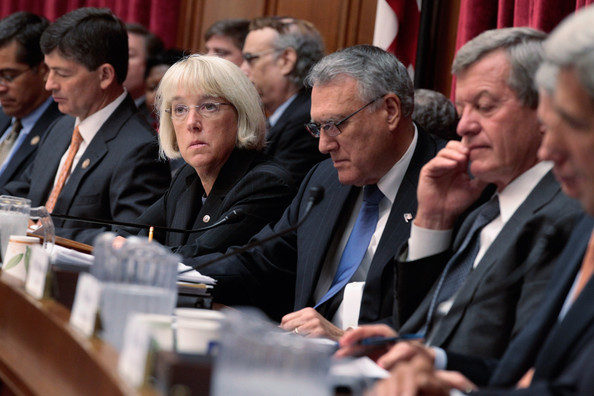MAKE TWICE THE IMPACT
Help us support healthier families, stronger local economies, and a more resilient food system for us all.
Your gift today will be matched thanks to the Hamp Family Fund.
On Monday, Congress’s four agriculture policy leaders (Senate Agriculture Committee Chair Debbie Stabenow [D-MI], Ranking Member Pat Roberts [R-KS], House Ag Committee Chair Frank Lucas [R-OK], and Ranking Member Collin Peterson [D-MN]), sent a bipartisan letter to the deficit-cutting “select committee” offering to make $23 billion in spending cuts to agriculture and nutrition programs authorized by the Farm Bill.

The twelve member Select Committee on Deficit Reduction has been tasked with coming up with a proposal to cut government spending by at least $1.2 trillion over ten years. The ag leaders’ hope is that by agreeing to significant cuts and offering consensus on which programs they should come from, they could forestall worse damage to the sector.
According to reports, the agriculture committee leaders agreed on a framework in which more than half of the cuts will come from commodity support programs for crops like corn and soybeans; conservation will be cut by $6-$7 billion; and $4-$5 billion will come from nutrition spending over the next ten years. The group will send a detailed plan to the Select committee on November 1. The committee has until November 23rd to present a comprehensive deficit reduction plan to Congress, which must approve it by December 23rd or automatic across-the-board cuts will take effect in January 2013, a process known as sequestration.
Agriculture organizations have been offering proposals over the last month, and it looks clear that the commodity program structure of the last 15 years will change substantially. Even its strongest supporters recognize that the programs are politically indefensible in a time of high commodity prices and budget cutting fervor. The movement is toward a system that mixes subsidized crop insurance with federal disaster assistance programs.
Conservation advocates are concerned that there will be deep cuts in conservation programs at a time when high prices are encouraging farmers to start producing on fragile land. One of the advantages of the commodity programs is that producers have to use sustainable production techniques to receive payments. There are no analogous requirements in the crop insurance programs.
If the ag leaders do suggest cutting $4 – $5 billion from nutrition programs, it will be much less than Rep. Paul Ryan’s (R-WI) proposal to turn the SNAP program (formerly food stamps) into a block grant to the states that would have result in a $127 billion cut over ten years. However, the Administration’s position is that there should be no cuts to anti-hunger programs at a time when more than 45 million Americans are relying on them.
The Agriculture Committee leaders’ letter does not include any specific policy proposals, and it is not clear whether they will include support for local and regional food system priorities, including healthy fruit and vegetable incentive programs, food infrastructure development, or retail incentives such as the Healthy Food Financing Initiative. Senator Gillibrand (D-NY) introduced a bill to provide machines that process SNAP transactions to all farmers’ markets, Green Carts, and other healthy food retailers, and Rep. Chellie Pingree (D-ME) is expected to introduce a larger sustainable food system bill in early November. On October 14, Rep Kaptur (D-OH) introduced the Community Agriculture Development and Jobs Act, which proposes to create an Office of Community Agriculture within USDA to make USDA programs more accessible in cities and also increases funding for several farmers market and incentive programs.
Negotiations will continue for the next several weeks, so now is a good time to be in touch with members of Congress about your organization’s priorities. After that the process will become more muddled: it will be a question of whether the Select committee is able to arrive at a deal and whether it will include the agriculture and nutrition cuts suggested by the Agriculture Committee leadership. If the select committee offers a deficit-cut package on November 23 it will still have to be approved by both houses and signed by the President by December 23.

Joint Select Committee on Deficit Reduction
The Congressional agriculture leadership has taken the gamble that the select committee process has a high-enough likelihood of being successful that it is worth their while to offer substantive policy proposals and hope they are accepted. They anticipate that by presenting a consensus package they will be rewarded as “good players” and have their ideas accepted intact. Authorization for existing farm programs will expire next September, and it would be very difficult politically to write a farm bill with big cuts in an election year (2012), especially with Congress as divided as it is now. Whatever the outcome of the deficit negotiations process this fall, there will almost certainly be continuing and intense discussion and tweaking of ag policy in 2012 — all of us interested in the future of food and agriculture policy will need to stay engaged.